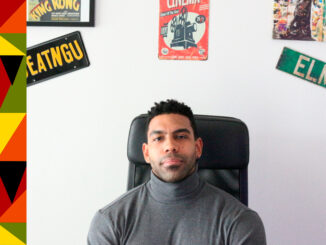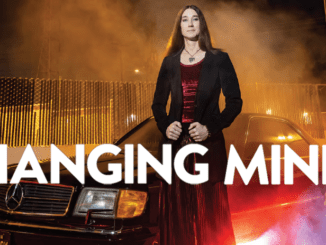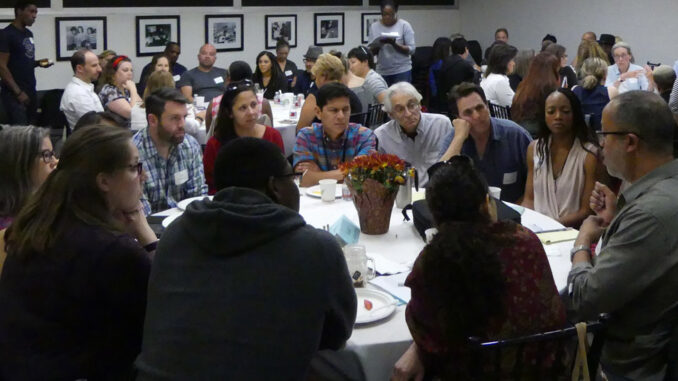
by Edward Landler • photos by Lisa Dosch
On a Sunday morning in mid-September the Dede Allen Seminar Room at the Motion Picture Editors Guild’s Los Angeles offices was the setting for Break the Ice, the first roundtable discussion meeting open to the Guild membership, organized by the Guild’s Diversity Committee. The gathering’s purpose was to establish an ongoing conversation about the discrimination continually faced by members in the industry due to their race, gender or age.
The committee started planning Break the Ice after receiving the results of a 26-question survey sent out to Guild members in February to determine the extent of discrimination in post-production. Close to a full third of members responded, by far the largest response ever from the membership on any single topic. About 60 percent of responding members believed that diversity was an issue while around 36 percent indicated they had been victims of discriminatory attitudes or practices — most noticeably in salary disparities among different genders and ethnicities.
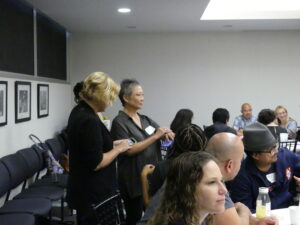
Welcoming the participants who reserved places for the limited-capacity event, Diversity Committee co-chair, MPEG Board member and picture editor Maysie Hoy, ACE, said, “We have enough roadblocks in our careers without getting in our own way, so we want to bring more awareness to the Guild of the diversity issue through networking. We’ve created this event as a safe place for all of us to get to know one another and share our stories.”
Committee member and assistant editor Halima Gilliam added, “Break the Ice is not just another mixer. Our intention is to say to the membership as a body, ‘Here we are, we exist; diversity exists. How can we focus on influencing the industry, starting with MPEG?’”
The attendees were divided into four discussion groups seated at separate round tables, each hosted and moderated by different committee members: Gilliam, assistant editor Shannon Davis, picture editor Dorian Harris, ACE, and Board member and assistant editor Sharon Smith Holley.
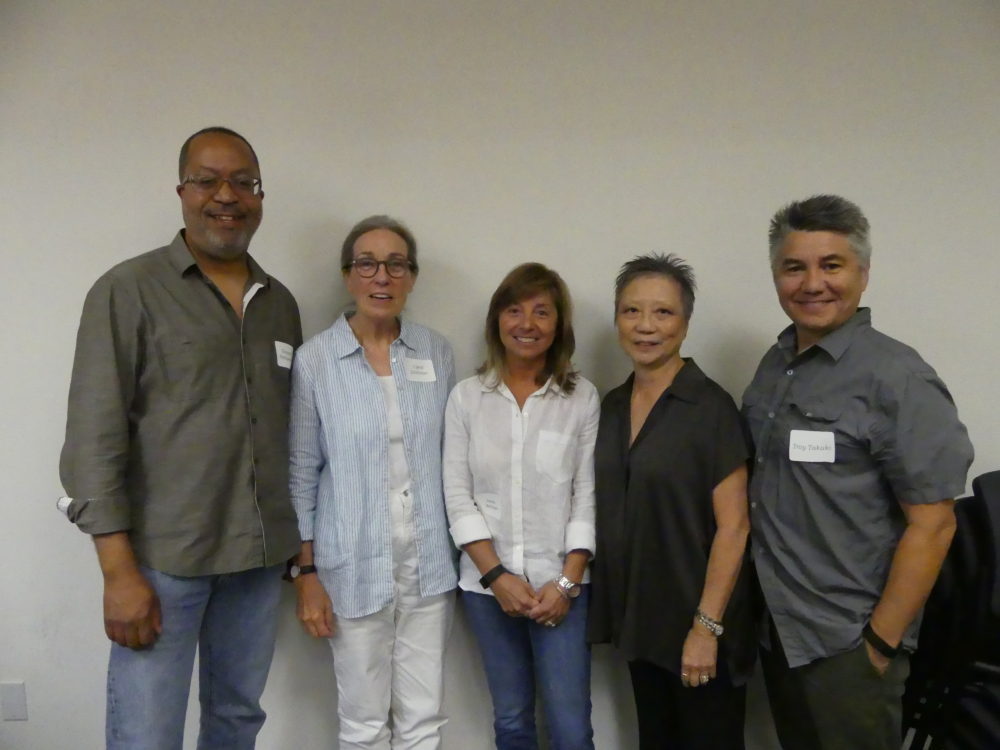
To further stimulate the discussions, Holley had suggested the introduction of four “migrating” panelists to share their personal experiences and perspectives at each of the four tables. At 45-minute intervals, these special guests rotated from one table to another so all participants had the opportunity to converse with them. The rotating guests were: re-recording mixer Anna Behlmer; supervising sound editor Greg Hedgepath, MPSE; picture editor Carol Littleton, ACE; and picture editor Troy Takaki, ACE.
At each table, these guests were greeted by appropriately diverse groups of Guild members in terms of age, experience, gender, race and craft classification. One table, for example, included six women and four men who were Chinese, Black, Hispanic, Filipino and White, representing picture editors, feature assistant editors, TV assistant editors, a feature re-recording mixer, a TV re-recording mixer and a technical director.
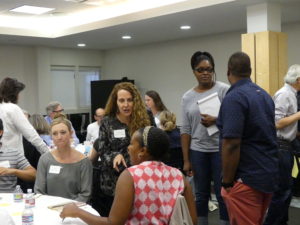
Table host Holley later noted that, as a committee member, she was pleased that some highly experienced and respected members came to participate in the meeting, including Board member and picture editor Michael Tronick, ACE, former Motion Picture Sound Editors president Bobbi Banks, MPSE, re-recording mixer Gary Bourgeois, CAS, and assistant editor Trudy Yee. Littleton observed, “The roundtable structure created an intimate atmosphere where people felt safe about bringing up their concerns and problems.”
During the morning, as he moved from table to table, Hedgepath shared stories of his career in the industry — from an affirmative action program at a Youngstown, Ohio, TV station, to being the only African American out of 400 employees at a socially insulated Lucasfilm in a Marin County also lacking diversity, to his current work in Los Angeles. His experiences conform to the persistent inequalities among races in American society continuing since the death of Martin Luther King, Jr., when Hedgepath was 13 years old.
Whether it was someone trying to get him fired at Lucasfilm by sabotaging his work or a post house executive with whom he has often worked actively snubbing him and his wife at an industry social event, Hedgepath said, “I let adversity motivate me. You can get mad or you can get stronger… I worry about kids in the inner city, how they will feel when treated by people like this.”

Putting his experience in a larger perspective, the sound editor told of having dinner recently with a Jewish friend, who had lived across the street from him in a racially mixed part of Washington, DC, when they were kids. After decades apart and different adult lives, the friend admitted it was difficult to relate to Hedgepath’s experience: “‘Greg, I’m living in a bubble.’”
Hedgepath told the roundtables, “If you don’t experience people different than you, you are going to develop certain thought patterns… Hiring people we know results in a predominantly white male environment.” He pointed out, “When I was at Soundelux, I wondered why I was not getting more diverse movies, only black-oriented films…working with lower budgets and lower rates. This has nothing to do with experience and ability.”
While Hedgepath feels encouraged that the “Oscars So White” campaign has the business thinking about diversity, he still sees few African Americans doing post sound. He said, “By the same token, Black movies are only marketed to black people, though Straight Outta Compton [which he worked on in 2015] opened some eyes.”
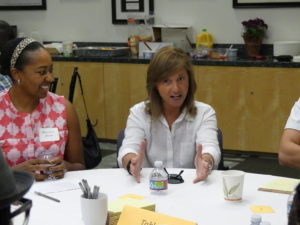
As a woman and a re-recording mixer, Behlmer also had to find the means to empower herself in order to rise in the industry. In 1989, when she was accepted into a mixer training program at Todd-AO, she said, “I was told openly, ‘We need a woman as a token.’”
Although she found some men — like re-recording mixer Bourgeois — supportive of her efforts, she often was the object of resentment and verbal abuse. One picture editor, she said, “treated me like s**t trying so hard to make me quit… And if somebody asked, ‘How are you doing?’ I was told, ‘Don’t complain’ or ‘Gut it out.’ I had to do that for a very long time.”
Once Behlmer became the first woman to receive an Oscar nomination for Best Sound (the first of 10), that treatment “kind of stopped,” she said. As someone at one table pointed out, “Women get hired for their experience, while men can get hired for their potential.” Still, she said she was gratified when, “For the first time in history, I worked on a picture that two women mixed for.”
Working now at Technicolor with two other female mixers, she said, “I’m in an environment where I’m accepted and encouraged…and I thought things had gotten significantly better, but that’s only because it’s talked about more. I thought having three women mixers was good until I was asked how many women mixers are there total… What’s most distressing is realizing that not much has changed.”
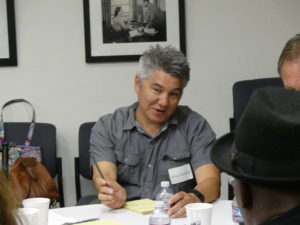
During his table rotation, picture editor Takaki encouraged concrete efforts to achieve a real appreciation of diversity in the entertainment industry through professional groups. As an example, he shared the experience of the American Cinema Editors’ (ACE) Diversity in Editing Mentorship Program, started in July 2015, “to create a more diverse editing community that includes more women and minorities.” He said, “I don’t know how to form groups; I just know how I formed my group.” Other ACE editors important in establishing the Diversity Mentorship Program were Mark Yoshikawa, ACE, Tina Hirsch, ACE, and Lillian Benson, ACE.
Influencing the Diversity Program was ACE’s Internship Program, started almost 25 years ago, with an emphasis on social interaction along with training. Takaki wondered, though, that while the Internship yearly accepted “about 50 percent women and a third minorities, where do they all go after the program ends?” This echoed a comment made by Hedgepath that film schools and internships start off diverse, but once the students “go into the business, diversity falls off.”
Lasting six months every year, and open to men and women of all races, the new ACE Diversity Mentorship Program accepts post assistants starting their careers, assistant editors, and editors with fewer than 60 months of credits; with their ACE mentors, the editor and assistant editor mentees also share in mentoring tasks. Through both skill sharing and the social aspect, strong relationships are cultivated within core training groups and at regular social events open to all.
One of Takaki’s key points was: “People can start their own groups and we will help them. We have to help each other to help ourselves. No matter who or what you are, you are welcome in such groups if you wish to advance diversity and have ideas how to help. Hopefully, this will happen naturally as opposed to a quota system.”
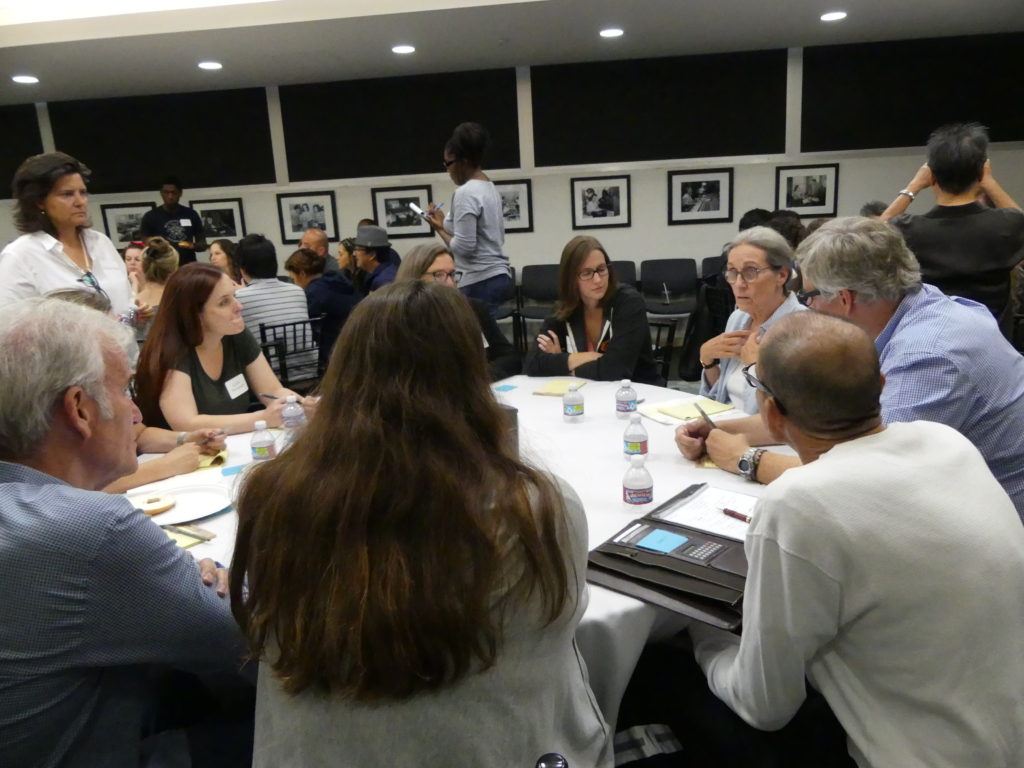
Providing a longer-range view, Littleton said, “When I joined the Guild in the ‘70s, we had less than 3,000 members; roughly 70 percent were white males with about 20 percent women, 5 percent Latino, 1.5 percent African American and 1.5 percent Asian. Today, with 7,200 members, the percentages are about the same. As an institution, we have not yet successfully dealt with issues of diversity.”
Describing her efforts to support minorities, she said, “I consciously chose to hire minorities. I made it a practice to hire at least one woman or racial minority on each of my editorial crews. Diversity of gender and race cannot be achieved in a day, but there are ways to create diversity in the workplace, one film at a time.”
Recognizing the depth of the issue, she continued, “There is an adolescent culture in this business. Racism, gender bias, ageism are ingrained in this culture, and white men — the majority group in the union — automatically hire those they feel most comfortable working with. But that can change. I believe that women have civilized the workplace and, once the problem is pointed out, men become sensitive to the issue and start to hire from diverse groups.”
“Our work is our work; if you do quality work, people will know. It’s a collaborative business. The more we can share the better off we are,” said Littleton.
Littleton also recounted her responses to discrimination: “As the leader of the editorial crew, the editor has to stand up and protect his or her staff. If any member of my crew is discriminated against in any way, whether it’s based on age, sex, ethnicity, wages, hours or any transgression, I will protect them.”
“Our work is our work; if you do quality work, people will know,” she insisted, adding, “It’s a collaborative business. The more we can share the better off we are.” Then she called for “more innovative ideas, from simple things to more complex issues, to get our goals accomplished, step by step, day by day, year by year.”
The special guests’ personal insights generated discussions at the four tables aimed at developing and sharing survival tactics for the specific issues and concerns brought up by participants. Minority and women members both related experiences in which they were the brunt of objectionable treatment but found it hard to take a stand and protect their jobs at the same time.
A Latino assistant editor said, “It’s an industry where [if] you say something, you’re not going to get work.” One woman in a craft classification with very few females reported a fellow worker who called her a c**t: “The guy lost his job but I was ostracized afterwards and I took a financial hit until I was called for jobs again. It’s a milestone when I get to where I don’t have to work with that person.”
Bourgeois described how other men regarded his stance against discrimination: “As a white male, they think you’re one of them. In a meeting about having female mixers, women are openly called c**ts and bitches, and they say women can’t get the sound of guns right. And when you stand up for women, you’re ostracized.”

Assistant editor Yee said she sees these issues start as early as the interview for a job, “usually about being Chinese.” Picture editor Seagan Ngai added, “Then as an Asian woman, you get it two-fold.” Other women also saw bias in interviews, noting that men are usually not asked if they are married and have kids while women always are.
Table host Davis suggested that the larger issue of how the balance between work and home is assumed to relate more to women should be addressed. One participant said it reflected a generational holdover from when the man went to work and the woman was the housekeeper. Marriage is now a partnership in both, but women are judged more harshly for taking time off from work for kids. Bourgeois said,” We’ve actually seen some things have changed; sometimes it’s changed the way things are expressed, but it’s still there.”
Nevertheless, as Holley said, “There is a different mindset between TV and features with more women in TV coming in as showrunners.” Similarly, at her table, Harris said, “The trend in TV is to have more diverse crews. Scripted TV needs experienced women and minorities who are coming from non-scripted TV.” At another table, Gilliam said, “There’s more diversity on the screen but a stark contrast behind the camera.” Another attendee noted that Canadian television is making a point to prioritize women and the next generation of crews is becoming more balanced.
Participants at at least two tables discussed sharing information about pay with others to help in negotiating for better rates. At one table, Takaki called for meetings among editors and assistant editors to talk about rates in safe environments. Committee member Tatiana Riegel, ACE, said, “We need to share because producers know among themselves; it puts us on an even footing.” Holley added, “You can state actual comparisons.” Picture editor Cate Haight, Bourgeois and others offered that they would share information with people with whom they feel comfortable.
“We need to share because producers know among themselves; it puts us on an even footing,” said Tatiana Riegel.
Coming out of these discussions, Hedgepath observed that the Diversity Committee “could be used to get information out about how to handle delicate situations; this guidance could be invaluable.” He also suggested that shows with diverse crews be publicized: “Play to producers’ desire for good publicity.” Committee member Davis saw ideas like these as “the real world things we can do tomorrow.”
At the close of the meeting, Hoy said, “Ultimately, it should be about the quality of the work, but the crew that you work with is your family and sometimes it can be dysfunctional. We have to find ways to diffuse and enlighten people who live in a bubble…and sometimes maybe it isn’t about gender or race. What we need are friends.”
Moving forward, Hoy would like to see the Diversity Committee set up more roundtable discussions and widen attendance by inviting agents, producers and directors: “These are the people who have the power to make the change.”
As for Break the Ice, Hedgepath said, “I was surprised so many people attended and how open — and how engaged — people were.”
Another attendee said, “Now I don’t feel so alone.”
(Diversity Committee member and assistant editor Kathleen McAuley contributed her notes from the Break the Ice discussions for this article.)



